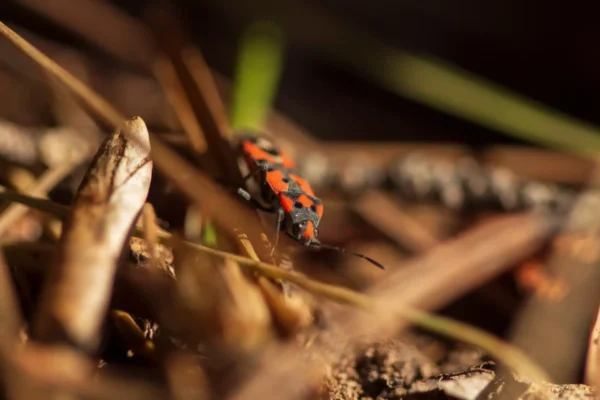Chinch bugs are one of the most serious threats to Jacksonville FL lawns, amongst many others. But they’re not the only threats to your Jacksonville FL lawn. Mole crickets, sod webworms, and armyworms can also do serious damage to grass and other plants on your property:

- The tunnels created by mole crickets can create unsightly lumps in your lawn. Additionally, these pests eat the roots of many plants, including grass and flowers.
- Both sod webworms and armyworms are the larval stages of a moth’s life cycle. These very hungry caterpillars can consume large amounts of grass near the roots, creating dead spots in your lawn that may require extensive work to repair.
Need Lawn Care? We Can Help.
Click the button below to leave your information & we'll be in touch in an hour or less.
Need Pest Control Service?
Leave your information below and we’ll be in touch with a FREE quote!
"*" indicates required fields
*During normal business hours. After hours calls will be returned the next business day.
What Is a Chinch Bug?
Chinch bugs are common throughout the U.S. These insects are small and brown and are often found in large swarms. They typically feed on grass and other vegetation by puncturing stems and extracting liquid from the inside, leaving large patches of yellow, brown, and dying grass in their wake. Female chinch bugs can lay up to 500 eggs at a time. As progressive generations of chinch bugs hatch, the nymphs and adult insects will continue to destroy grass and other vegetation.
Taking steps to address these infestations can help you maintain a healthier lawn for increased curb appeal all year long.
Other Jacksonville FL Lawn Pests
Rain Worm Millipedes
They don’t really have a thousand legs, and they aren’t insects. Millipedes are classified as arthropods because of their multi-segmented bodies. The pests average 1 to 2 inches in length, and their round heads are topped with short antennae. They’re often called rain worms because they become active after wet weather. Millipedes spend winters underground and lay their eggs in early spring. They feed on decaying vegetation and quickly migrate to nearby healthy grass turf and root systems.
Greenbug Aphids
Aphids have a destructive reputation in the garden, but the Schizaphis graminum species also inflict damage on healthy lawns. Commonly known as greenbugs, these light green aphids sport a dark green stripe on pear-shaped backs. They’re one of the few insects that can reproduce without actually mating, and their nymphs thrive year-round in our mild coastal climate. Greenbug aphids pose a double threat to your lawn. Their feeding destroys plant cell walls, and their sticky residue makes grass vulnerable to sooty mold.
Tough Scale Bugs
Our region is home to false oleander, cottony cushion, and Florida wax bugs, but there are more than 175 species of scale insects across Jacksonville FL. These tiny pests are almost invisible as they settle into healthy lawns and attach to tender plant tissue. Scale bugs protect themselves with a tough shell as they feed, so you might mistake an infestation for fungal lawn growth. That same dome-like covering makes it hard to eliminate scale bugs with traditional treatments.
Invasive Sod Webworms
As these pests cycle through three phases, from larvae to adult, your lawn serves as their only food source. Sod webworms are an invasive type of turf caterpillar that begins underground and matures into dingy brown moths. You often notice different grass heights in areas where larvae are feeding, and their activity also creates unsightly brown and yellow grass patches. Webworms are especially hard on newly installed sod.
As different as these bugs are, they’re alike because they start off as an almost invisible problem that quickly turns into extensive turf grass damage. When you need help with any type of lawn pest, your local lawn care expert will assess and treat any infestation.
